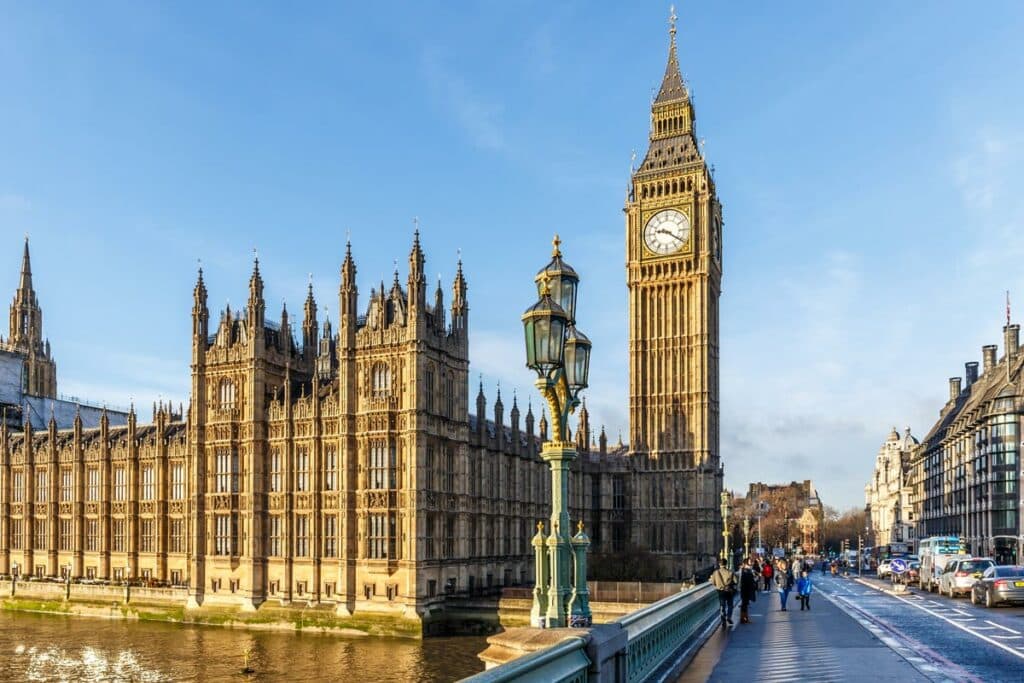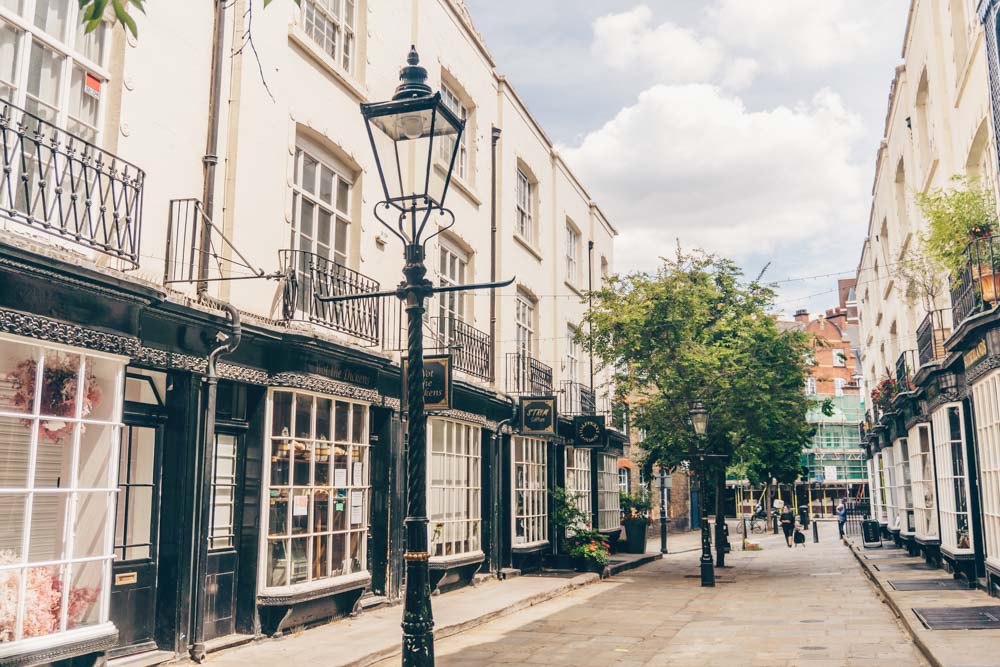Signs of the Industrial Revolution can be found all over London – however, very few can date their origins back to the Saxon times. Three Mills Island can, though. Here’s what you need to know.
Three Mills is one of London’s oldest surviving industrial hubs that now incorporates an island, a TV and film studio, and an open play space for the public to enjoy year-round.
But how did Three Mills Island come to be, and just what are its origins? Well, let’s take a look at the rich and fascinating past of one of London’s original industrial centres.
Where is Three Mills Island?
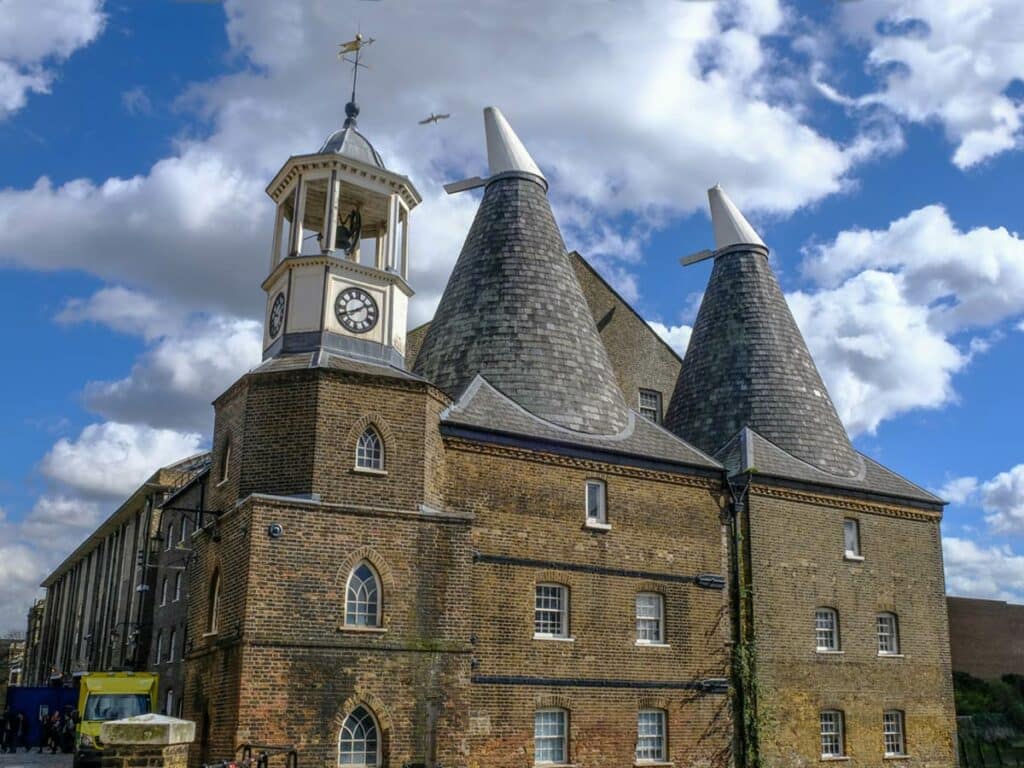
Three Mills is officially in the London Borough of Newham in East London. However, most access points are from neighbouring Tower Hamlets. The site is in Bromley-by-Bow and lies on the River Lea, where it also forms part of the 50-mile Lea Valley Walk.
Why Visit Three Mills Island?
To put it simply: Three Mills Island is home to the world’s largest surviving tidal mill.
The Grade I listed 18th Century House Mill is open for guided tours every Sunday or by prior appointment. Oh, and there’s also the neighbouring Grade II listed Clock Mill, which forms part of 3 Mills Film Studio, and the recently rebuilt and renovated Miller’s House.
Not to mention that the space is also home to plenty of concerts and festivals throughout the year – past iterations have included plenty of Boiler Room raves and the Maiden Voyage Festival which premiered in 2022.
Beautiful Green Space
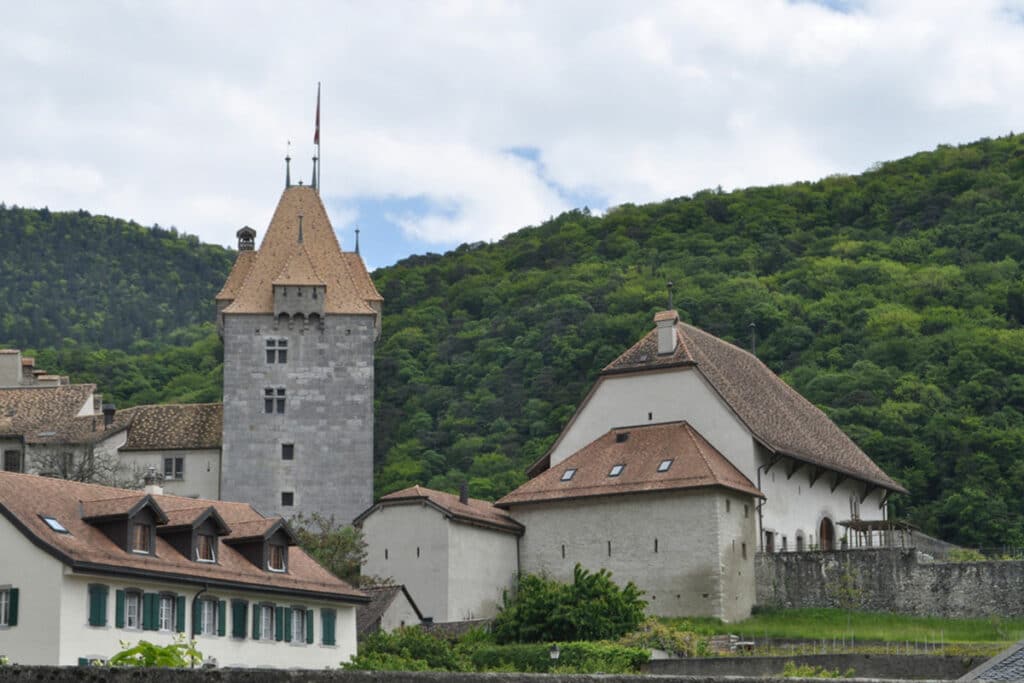
If that alone isn’t enough to tempt you to take the District Line Eastwards, the stunning green spaces are a beautiful, peaceful oasis amongst the rabble-rousing hustle and bustle of London’s East End might just be the ticket.
You can grab a cuppa and a piece of cake (go on, you know you want to!) from the park’s cafe, meanwhile, your kids can run riot in the Wild Kingdom. This ridiculously fun adventure playground incorporates fallen trees and their stumps, nets, ropes and so much more. We always find ourselves looking on longingly, desperate to have a go on the swings.
The Line Walk
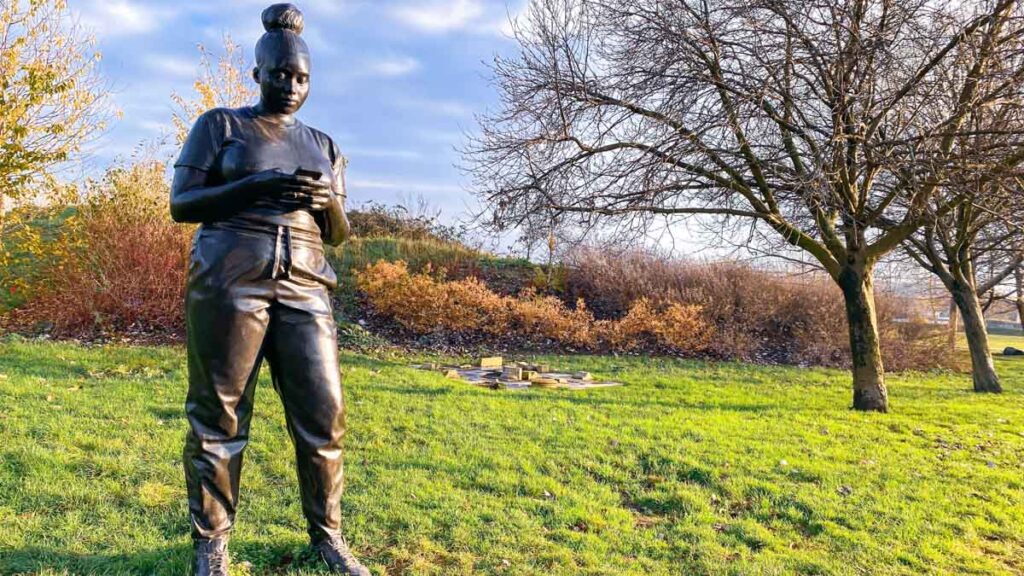
Three Mills Green and Island just so happen to be smack-bang in the centre of The Line Walk – a cool London trail that takes you past sculptures and artworks by some very big names.
Some of the art installations on The Line walk include works by renowned local sculptors Madge Gill and Thomas J Price, as well as Tracey Emin’s only London-based public sculpture that features five bronze birds perched above head height gazing at the historic sight they overlook.
So, head to the west of the park, just north of the Helping Hands memorial and you’ll be able to spot a sculpture for yourself.
Though the artwork rotates (so who knows what will be there when you visit), the current statue at Three Mills is Reaching Out by Thomas J Price – a 9-foot-tall depiction of a Black woman holding a mobile phone. It was unveiled amid the significant 2020 protests surrounding racial inequality, so it is quite a poignant addition to the park.
History of Three Mills Green and Three Mills Island
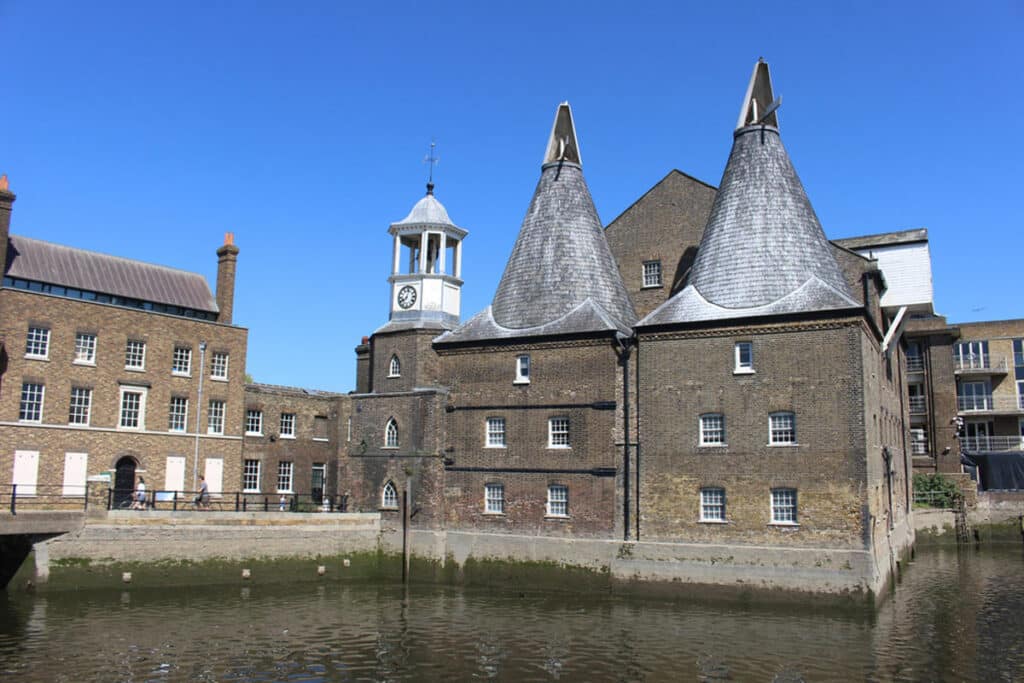
The Domesday Book refers to eight or nine mills on the River Lea in the Stratford area, forming the earliest recorded tidal mills system in England dating back to the late 11th Century. In this census, 16 workers are recorded in the Clock Mill.
The nearby Stratford Langthorne Abbey acquired Three Mills in the 12th or 13th Century, and it is believed that Cistercian monks from the abbey created what is now known as Three Mills Island. They created an artificial island, partially derived by driven oak piles, within the water courses known as the Bow Back Rivers, which form part of the River Lea.
In the 1530s, during the Reformation, King Henry VIII (that famed enemy of abbots, monks, and monasteries) dissolved the abbey. At this time, the mills were supplying the bakers of Stratford with flour that went on to supply the famous City of London market with bread of outstanding quality.
Gunpowder, Linseed and Gin
While the mills continued to grind corn to create flour for much of the next 200 years, production switched for a short time to gunpowder around 1588, when at least one of the mills was known as a “gunpowder mill,” and later on linseed oil.
By the early 18th Century, flour production had stopped as the buildings were purchased by a partnership to distil alcoholic beverages. The mills continued to grind, albeit now switching to grain which distilled the alcohol and worked with neighbouring distillery sheds, granaries, warehouses and a windmill to create gin.
House Mill and Clock Mill
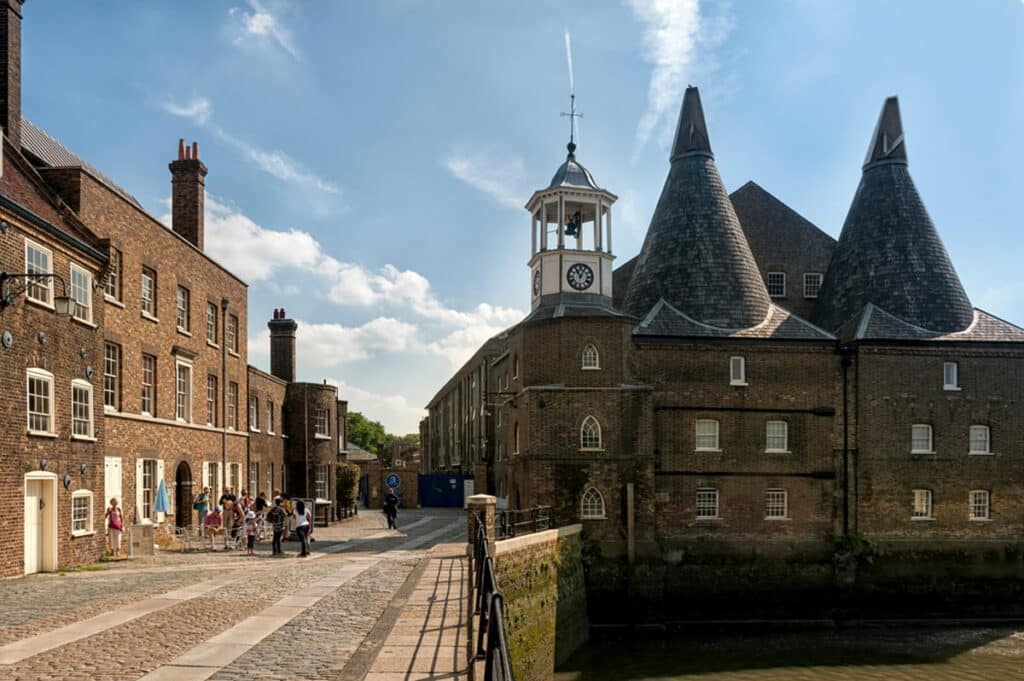
The House Mill was built in 1776, a replacement mill that straddled the tidal Three Mills River on arches. After it was decimated by fire in 1802, the rebuilt mill contained a timber frame behind the surviving front wall fitted with four water wheels.
Each wheel drove two pairs of millstones operated by an innovative gear system. Keep your eyes peeled as two of these wheels can still be seen today.
Meanwhile, the neighbouring Clock Mill was built in 1817 by Philip Metcalfe, renovating and extending an existing building on the site, partly with the addition of a beautiful and elegant clock tower. With its conical roofs, reminiscent of Dutch mill buildings, Clock Mill stood in front of the main distillery processing buildings.
Ownership of the site frequently changed during the 17th, 18th and 19th Centuries until it was purchased by Clerkenwell distillers J&W Nicholson & Co. After initially producing Lamplighter Gin on the premises, the company moved all brands to the site, where it continued until 1941.
Three Mills and Two Wars
During World War I, part of the distillery was commandeered to serve the war effort by helping to convert maize into acetone, an irreplaceable part of creating explosions in armaments.
Chaim Weizmann discovered the process and oversaw the creation of the fermentation plant before becoming the first president of the state of Israel in 1948.
Twenty-five years later, during the Second World War, rationing shortages led to the end of gin production at the site. Sadly, Three Mills suffered substantial bomb damage during the Blitz, destroying the Miller’s House in 1941.
Three Mills Today
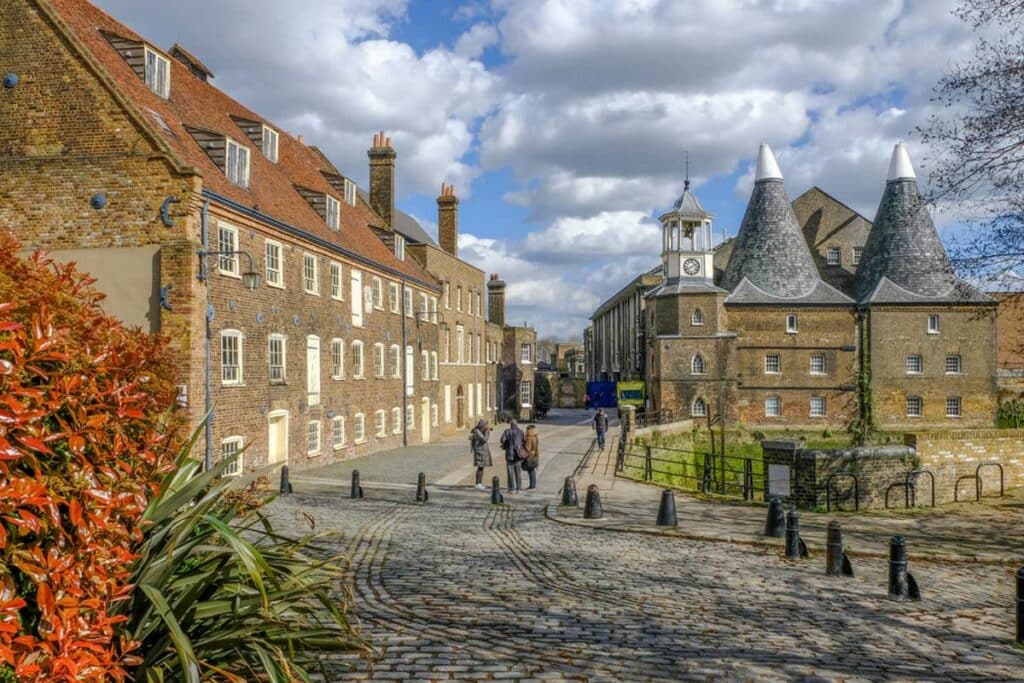
House Mill remains the largest tidal mill in the world, although the wheels are not in operation. It is one of four Grade I listed buildings in Newham, while the Clock Mill forms part of Three Mills film and TV studios.
Meanwhile, regeneration work ahead of the 2012 Summer Olympics in nearby Stratford saw the entire area renewed, including the creation of Three Mills Green, the vast open space that combines play areas with somewhere for people to sit, rest and soak up the surroundings.
Three Mills Island: Practical Information
Address: The Miller’s House, Three Mill Lane, London, E3 3DU
Opening Times: House Mill is open on Sunday afternoons during the summer between 11 am and 4 pm
Tickets: £10 per person for the House Mill, gardens are free

